Your music scheduling software should not work like a Rube Goldberg device, veteran music radio programmer and Music 1 developer Steve Warren says.
I’ve recently had the pleasure to talk with Steve about song separation and music rotation, revealing the best turnover for larger categories, and about category content vs. scheduling rules. Why “it’s easier to teach an elephant to tap-dance than to teach your music scheduler to do it right”, and why you’re better off if you stick to the essential rules of music scheduling.
“This particular slow song next to
that particular slow song is okay”

While a computer is using strict rules (‘no 2 slow songs back to back’), a segue from a male power Rock ballad to a female soft Pop ballad – even if both have the same tempo – could be acceptable (photos: Marco Maas, PJ Media)
Check & edit music logs
Music scheduling software? Selector, MusicMaster and Powergold may come to your mind first. Seasoned radio programmer Steve Warren developed a less-known alternative called Music 1, which he considers to be significantly different. First-generation software like Selector, he says, is based on song characteristics and scheduling rules to make software ‘think’ and ‘choose’ like humans: “When the first music scheduler came out in the late 70s, the pitch was that once you set it up, it would take you 10 minutes a day. It never happened! 35 years later, the average music director in the western world is still spending 1 tot 1.5 hours a day, editing the log to fix what the scheduler did wrong.” He claims that his clients do need less than 10 minutes to edit a 1-day music log. “Music 1 wasn’t designed as artificial intelligence; it was designed to be interactive. First-generation programs schedule the entire day. They either flag slots that violated a rule, or leave the slot open. Then you’re spending 60 to 90 minutes on fixing the problems or filling the blanks.”
Build daypart & hour rotations
He realizes that no music scheduler will be able to prevent any rule violations, as we radio programmers use complex rules like ‘play a song in every other daypart before repeating it in the same daypart, but a different hour’. While replacing scheduled songs or filling unscheduled slots, we often break other scheduling rules, causing new problems. “This rolling-snowball effect is what music directors have been dealing with for 35 freakin’ years!”
Dig one level deeper
Warren came up with the idea to edit a log during the actual scheduling process. “Instead of trying to teach the computer to think like you do, you’re making it a bird dog.” Music 1 would stop scheduling as soon as a violation occurs, display the 5 songs on top of the category ‘card stack’, and show why they ‘cannot’ be scheduled. While one song might cause an artist separation problem, another one might violate a tempo rule like ‘no 2 slow songs back to back’. “But sometimes, this particular slow song next to that particular slow song is okay. How can you teach that to a computer?” In this case, he would override the rule, or do what Bill Drake and Paul Drew did. They’d insert 1 of the 5 suggested songs into the next category slot, thus allowing a 6th suggested song to pop up, which might fit into the present category slot:
[audio:http://www.radioiloveit.com/wp-content/uploads/steve-warren-music-scheduling-radio-consultant-interview-01.mp3|titles=Steve Warren about triggering alternative song cards]
“Most music scheduling software works
like a Rube Goldberg machine”
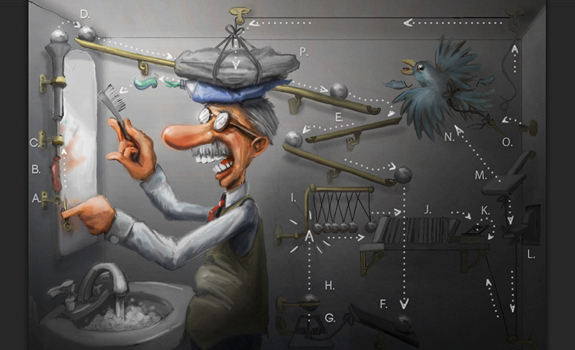
Music scheduling is complex, as (solving) one thing may lead to (creating) another (image: Gizmodo, Sam Spratt)
Create balanced music playlists
He recalls how in the early days, music scheduling was done by hand: “We would number power currents, power recurrents and power golds, using a sticker on records or carts. Then, we wrote into a playlist slot for the hour, which ones we were going to play. Having them on a grid, we could see that a particular song was first going to play in the first, and then in the third, second and fourth quarter hour.” Even if jocks would play some power currents 2 or 3 times during a 5-hour shift, they would always play a song in a different quarter hour each time, for a good daily & weekly rotation. While they had to play many songs over and over, presenters still had some liberty: “A disc jockey had half of his hour prescheduled, and would select his medium & light currents and secondary golds. It was up to him to pick the right stuff to fit the flow.” Program directors had to critique jocks for their music selection, making sure they knew what was expected in terms of on-air sound. In hours with many prescheduled slow power songs, they would ensure musical balance by choosing mainly up-tempo secondary songs.
 Solve artist separation conflicts
Solve artist separation conflicts
The 1970s had superstar artists who dominated the record & airplay charts for years in a row. Therefore, stations would not only play a core artists’ current hits, but also his recurrents & golds. Using Elton John as an example, Steve Warren remembers how jocks would fix their prescheduled music log for artist separation problems. They would simply let two songs from the same music category switch places like this:
[audio:http://www.radioiloveit.com/wp-content/uploads/steve-warren-music-scheduling-radio-consultant-interview-02.mp3|titles=Steve Warren about fixing artist separation problems]
Have uneven rotation times
He always likes to use a 19-hour turnover for larger music categories, such as recurrents or golds. In his experience, songs then naturally cycle through all dayparts. “What plays today in afternoon drive, comes up in tomorrow’s midday; the next day’s morning drive; the next day’s overnight; the next day’s evening.” In his view, it’s about maintaining a constant average separation: “Let’s say a Katy Perry song with a 19-hour rotation comes up at 10:15, where it violates a rule. If I put her up at 11:15 instead, she’s now got a 20-hour turnover. But the next time she comes up is in 18 hours, so she’s going to have a proper rotation in the long run. It’s not like she appears at midday’s for 3 days in a row. Because then you have a rule that says: don’t do that! What happens to this Katy Perry song then? Who knows!? I think it’s easier to teach an elephant to tap-dance than to teach your music scheduler to do it right. The elephant actually does have a brain. Most music scheduling software works like a Rube Goldberg machine.”
“It’s easier to teach an elephant to tap-dance
than to teach your music scheduler to do it right”
“Go with the flow of releases”

While it’s good to rotate a fixed number of power currents, it’s okay to spin a flexible number of secondary currents to weekly anticipate on how many suitable new songs are currently available (images: Republic Records, Epic Records)
Schedule small categories first
Should we schedule music categories one by one, from high-rotating currents to slow-rotating golds?
“Yes. I run 11 power currents and play 3 an hour – a 3 hours, 40 minutes turnover. Schedule those songs first.” Warren explains that if you would already have a Katy Perry power recurrent scheduled when a Katy Perry power current comes up that causes some kind of conflict, your software wouldn’t be able to dig far (as there might be just a few power currents available to choose from). “If you schedule bigger categories later, you could have a dig level of 5 in one category or 15 in another one. Depending on how many songs you’re playing, you might have 350 power golds with a dig level of 20.”
 Maintain consistent power rotations
Maintain consistent power rotations
What is a good combination of the number of songs in currents, recurrents and golds, to make sure that their rotations stay out of sync for long?
“You’ve got to look at individual categories as a stand-alone, I think. I’m not concerned with how many songs I have in medium current or power gold. I do have a set number of songs in power currents and power recurrents.”
Allow flexible secondary turnovers
To achieve an average 19-hour rotation for power recurrents, Steve Warren either plays 19 songs (1 each hour) or 38 songs (2 each hour). Apart from power currents and power recurrents, he likes to be flexible when scheduling music for a client station. “This week I’ve got 23 songs in medium currents; that’s not set. I go with the flow of new releases. If there aren’t many good new songs, I have a shorter list. My total current list now includes 34 songs. I’ve had as much as 42.” His advice is to analyze your music rotations every time you make significant changes, like adding songs to or removing songs from a category, or changing the amount of category positions inside your format clock. You might want to check the rotation pattern for each individual song (and song category) on a regular basis. If the pattern doesn’t look good, most high-end music schedulers are able to ‘flip’ a couple of songs on top of the current-music stack before starting to schedule a new day; making the actual current-song playlist virtually ‘shorter’.
“We always have this balancing act:
how much is too much?”
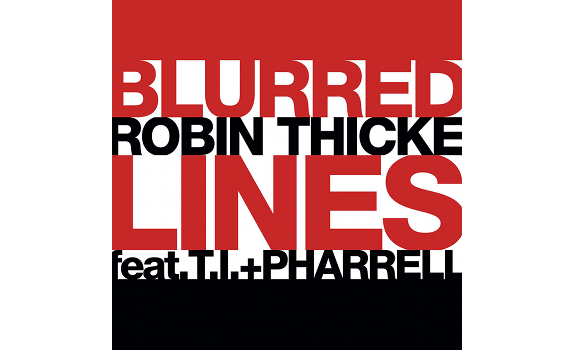
It’s not easy to find current songs that your target audience really loves for a long time (image: Interscope Records)
Avoid weekday timeslot repetition
Which music scheduling rules do you find essential for any radio format, and in which order?
“The most important thing is tempo. I’ve been in Country radio for a long time, running it like CHR. I want an up-tempo mix, with not too many slow titles in the hour, and not 2 slow songs back to back. The next thing is to make sure that songs don’t repeat at the same time during weekdays. I’m less concerned about weekends than about Monday to Friday, because weekday listening is very habitual. If you’re waking up with a clock radio, it comes on every day at the same time. When a mother gets in the car every day at 7:30 to drive her kids to school and is in her car until 8:00, I don’t want her to hear the same song in that half hour during the week. If it’s a power current, she might hear it twice a week – but not two days in a row. If she hears it on Monday, the next time it comes up should be on Thursday. But I certainly don’t want that to happen with oldies or recurrents.”
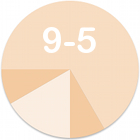 Program for 9-to-5 workers
Program for 9-to-5 workers
“I watch the hours between 8-9 AM and 5-6 PM”, Warren says, assuming that most people with a 9-to-5 job commute to work every workday between 8 and 9, and afterwards travel back home between 5 and 6. “I also make sure that a Katy Perry song which plays between 8 and 9, does not play between 5 and 6 on the same day.” He thinks that if those two hours are right for 9-to-5 workers, your music rotation is usually also going to be right for anybody else.
Follow your listener’s lifestyle
Listeners want to hear the same songs over and over – “they say they don’t, but they really do” – as long as you play their favorites. The challenge: “You can’t have a current-based music format where everybody in your target audience likes every song equally. Some people will hate that new song by Robin Thicke, while other people think it’s great! If they think it’s great and hear it 4 times a week when they drive to work, they think you’re the greatest station in the world! If their partner doesn’t like it and hears it twice a week, he or she will think you’re a crap station! We always have this balancing act of: how much is too much? Is this song still going up for most people, or is it burned? To position songs according to the listening patterns of our audience is one of the most important things.” Another good tip is using sound codes to separate similar subgenres:
[audio:http://www.radioiloveit.com/wp-content/uploads/steve-warren-music-scheduling-radio-consultant-interview-03.mp3|titles=Steve Warren about sound codes for music variety]
“The content of your music library
is more important than anything else”
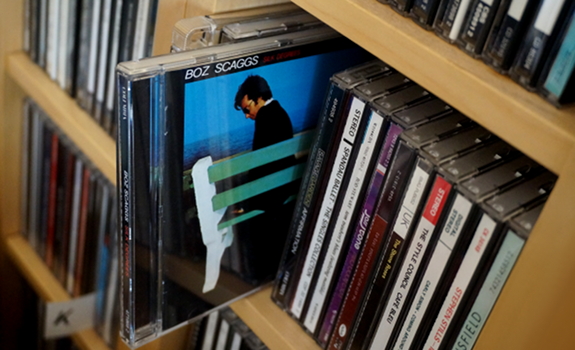
Filling your music categories with great songs – in proportions that will fit your intended scheduling rules – makes it much easier to generate naturally good music logs that need minimum tweaking attention (photo: Thomas Giger)
Stick to essential rules
What do you need for a good music flow, besides tempo levels, sound codes, artist separation and song rotation?
“It’s all you need. Think of it; there’s only a handful of colors. If you’re a landscape artist, one day you make your blue for the sky one way. The next time you take a canvas, you might make a different blue, but you’re still mixing green and yellow. What we do as music directors is less complicated than what people have been forced to make it with most of the tools. They’ve had to bend their thinking around complicated music scheduling software.” Steve Warren’s advice is to limit your scheduling rules to a minimum. A tempo rule like ‘always play a medium song between an uptempo and slow one’ to support a good music flow, may create a serious scheduling problem if it doesn’t match the content of your categories. He recently had this situation with a foreign client station:
[audio:http://www.radioiloveit.com/wp-content/uploads/steve-warren-music-scheduling-radio-consultant-interview-04.mp3|titles=Steve Warren about scheduling rules vs. category content]
 Calculate music database mathematics
Calculate music database mathematics
Rather make your scheduling rules match your category content: “The flow is almost always going to work out if you’ve picked the right songs and if you haven’t set your rules impossibly.” An example of something that won’t work, is a database with 30% slow songs combined with a rule of ‘maximum 3 slow songs an hour’. If you then play 14 songs an hour, the computer will ‘want’ to schedule 4 slow songs an hour instead of 3 (30% of 14 = 4.2).
Improve radio ratings systems
A different kind of math are radio ratings; PPM looks like a complex numbers game. Warren says “there’s not a legitimate mathematician or actuary in the world who’d look at the methodology we use to measure stations in the United States, and say that it even approaches statistical reliability. The sample is really low on the people meter. I have yet to talk to a radio guy in the States who knows this – and it may change now Nielsen bought Arbitron – but some could be a ‘people meter family’ for as long as two years.” Using his wife and their 28-year-old son as an example, he explains how this could seriously affect the ratings of a single station, as well as the whole market:
[audio:http://www.radioiloveit.com/wp-content/uploads/steve-warren-music-scheduling-radio-consultant-interview-05.mp3|titles=Steve Warren about people’s changing listening habits]
“Hearing was the first sense you’ve ever had”
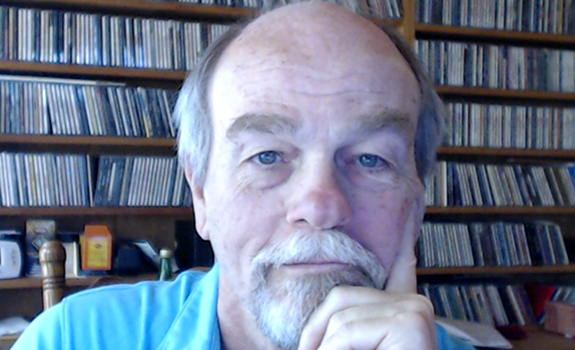
The medium of radio appeals to people’s most elementary ability to hear and recognize sounds (photo: Steve Warren)
Invest in radio personalities
Even if news, weather & traffic are now immediately available on a smartphone app, he feels like radio can (and should) really add something to it. “It’s comforting and soothing to turn on the radio, and have familiar voices talk to you about it. Hearing was the first sense you’ve ever had. As a fetus, you couldn’t smell, taste or see – but you could hear your mother’s heartbeat, and things outside. When my son was inside the belly of his mother, we used to put headphones on it and play music for him. His favorite song, before he was born, was Money for Nothing by Dire Straits. My wife would feel him move towards the speaker; he liked the bass notes. When he was 10, and got into a school band, he wanted to play the tuba; he liked the low notes. He’s now a tuba player in the US military.” Even if its role is changing, the medium of radio still has potential because of its unique ability. “Those vibrations do important things inside people’s heads.”






Question: How much time is the right time to create a daily 24-hour music log? I’m talking using a music scheduling software.
Too bad I can’t get back the time I took to read this. Of course simple settings are great for Music 1 – because it IS simple software.
You are certainly entitled to your 20th century opinions. I can only imagine stopping the scheduling process after every other song for the ‘user’ to decide.
Five minutes to edit the day? How contradictory.
Many years ago, I bought The Programming Operations Manual by Steve Warren.
Now I’ve found him again on RadioILoveIt, and it was a big surprise for me… good school! Waiting for part 2 soon.
P.S. Picture with Boz Scaggs, Silk Degrees… very nice! One of my favorites!